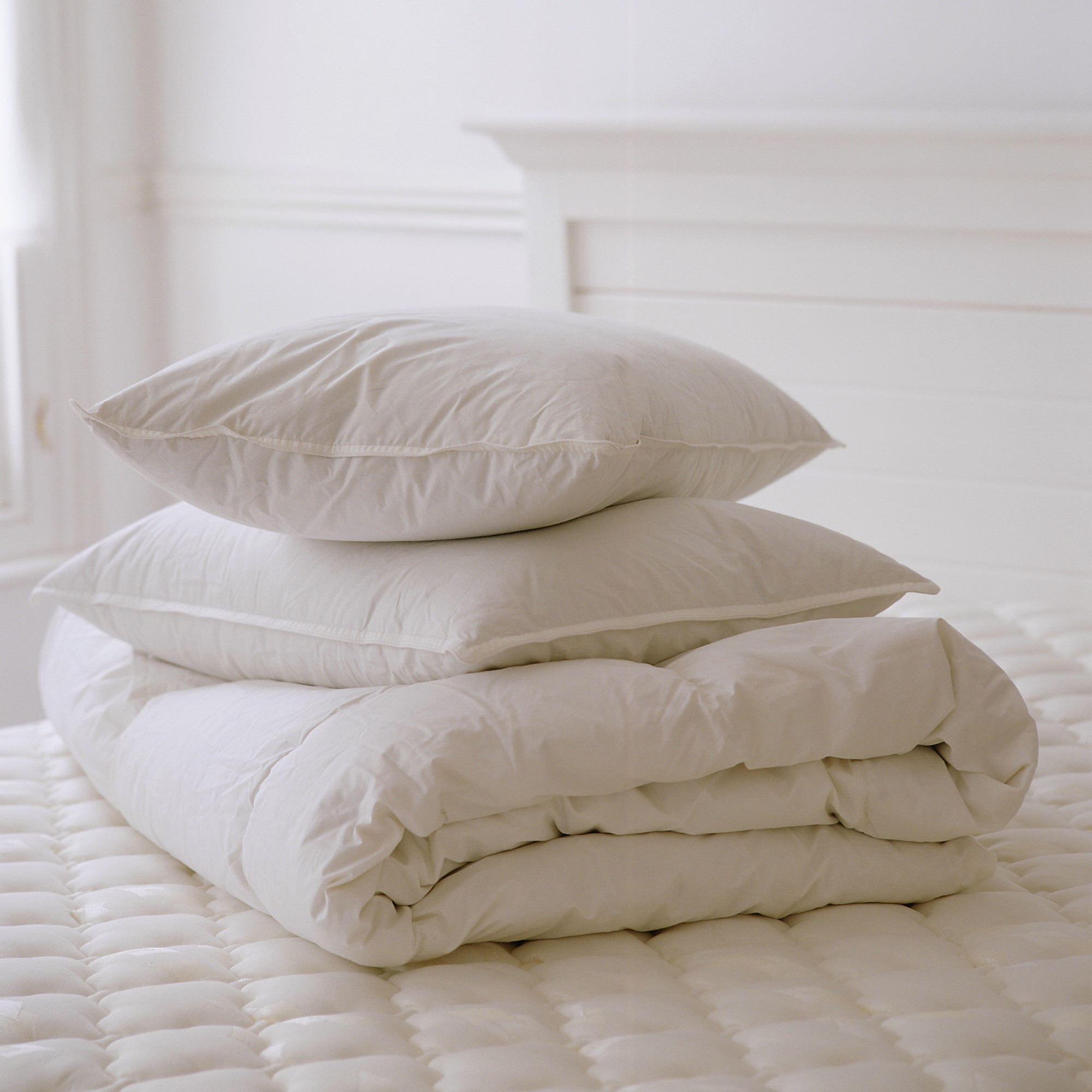
We should all be washing our duvet regularly, while we know that a key sticking point that stops us from doing it is how to dry it afterwards. Can you tumble-dry a duvet? Or do you have to just wait it out until it's dried naturally?
If you've decided to invest in the best duvet possible that your budget allows you have to be careful about how to wash your duvet and dry it afterwards if you don't want to damage it. Waiting for a duvet to dry naturally can be a painfully slow process, but the good news is that many duvets can be safely tumble-dried.
However, duvets all vary when it comes to materials and thickness which can affect how you care for them. We spoke to the experts to find out the best way to work out if you can tumble dry your duvet and the best way to do it.

1. Check the care label
‘Many duvets can be safely tumble dried after washing, as they’re often made from sheet-like fabric. For example, duvets filled with synthetic materials are particularly durable in tumble dryers,’ says James Sheldon, Furniture Expert and Manager at Online Sofa Shop. ‘But it's important to first check the care label for any specific instructions or limitations when drying.’
Ultimately, every duvet is different, whether that be because of its filling or the fabric that it’s made of. And ‘if your care label says not to use heat, then it's best to avoid the tumble dryer all together,’ adds Kelly Collins, Interior Designer at Swyft Home.
2. Use the lowest heat setting
Then it’s time to start tumble drying. ‘Using low heat minimises the risk of damaging, warping, or clumping the delicate fibres in your duvet,’ recommends James. Thomas Bird, Materials Expert at Fabric Online, also says to only fill the dryer with your duvet, ‘and no additional clothing items, as this can overfill the drier and will extend the time it takes to dry.’

4. Use dryer balls
While duvets filled with a synthetic filling like polyester or microfibre are less prone to clumping, duck down filled duvets can easily become lumpy and clumped. So, to prevent this from happening, all you need to do is pop in a few dryer balls or even some clean tennis balls before you press start on your tumble dryer. We like to use the Boss It Rapid Dryer Ball, available on Amazon which saves energy while preventing clumping.
Thomas even has a little hack which can help to keep your duvet smelling wonderful. Simply ‘add a couple of drops of your favourite essential oil onto a wool dryer ball before tossing it in with your duvet,’ he advises.
‘Just be sure the oil is completely absorbed by the ball before adding it to the dryer and this will make your duvet smell great.’

5. Continue to check and fluff
Regardless of your duvet’s size or how long it takes for it to dry fully, the experts all agree that you should pause the dryer and take the duvet out every 30 minutes to manually shake and fluff it. This will help to redistribute the filling more evenly and help to speed up the drying process.

How long does it take to tumble dry a duvet ?
As you might expect, the drying times differ depending on the size of your duvet. But in general, ‘single duvet typically takes 1.5 to 2 hours, a double duvet 2 to 2.5 hours, and a king/queen duvet 2.5 to 3 hours,’ admits Gwil Snook, AO.com’s Heated Laundry Expert.
Can you tumble dry a duck down duvet?
The simple answer is yes, as long as the care label confirms this. But as we outlined, you do have to take a number of steps to ensure that your duck down duvet is both suitable for tumble drying and to stop it from clumping as it is dried.

Will a duvet shrink in the dryer?
‘A duvet is unlikely to shrink if you follow the care instructions and use a low heat setting,’ James explains. However, 'some duvets can shrink in the dryer if exposed to high heat, so you'll want to keep any eye on your duvet while it's drying and make any adjustments as needed,' Henrique Conceicao, Area Manager at Total Clean, says.
Having your duvet in the tumble dryer for too long can also cause potential shrinkage.
If you find you can't tumble dry your particular type of duvet don't worry as there are plenty of other ways you can dry it quicker. Make sure you lay the duvet down flat on a drying rack and ensure it has good air circulation for even driving. You can also use one of the best dehumidifiers to help speed up the process.
But heed our parting words of wisdom aim to wash your duvet in the morning, and leave it to try completely or risk a damp-smelling bedroom. And no one wants that .







